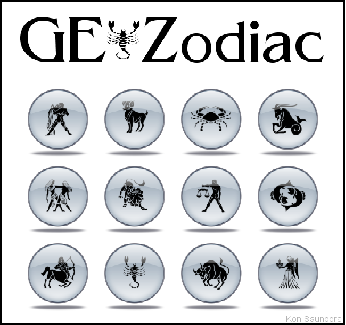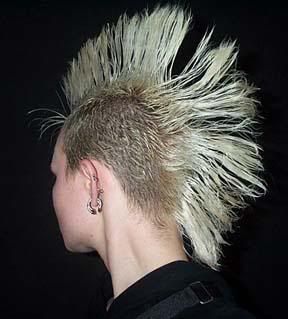> I can't think of any reason a meridian flip should interfere
> with exoplanet photometry ...
Really not ?
The meridian flip might not be the cause of the issues, but
it will make any issue that is present visible that might not
interfere without a meridian flip.
Its the experience of many observers, that they partially
get a jump in their mag values when they make a meri-
dian flip with their GEMs due to unresolved calibration
issues. See e.g.:
http://www.aavso.org/tmp/NGC6811.xls
These might influence the photometry by up to 0.2 mag !
A few even have "discovered" "new variables" due to this
issues when using moving averages.
Especially if the variable is relativly far way from the comps,
it will pronounce every calibration issues even for differential
photometry. See e.g.:
Differential photometry using distant comp
http://www.lolife.com/astronomy/bad.png
Differential photometry on the same frames using close
comps:
http://www.lolife.com/astronomy/good.png
The first discontinuity in the "bad" one is due to the meridian
flip. During the meridian flip the scope went from being
bathed in moonlight to being completely shielded from the
moonlight. The second discontinuity is due to some dome
obstruction that was resolved by moveing the dome.
What about having to rotate the camera by 180° after the
meridian flip to be able to place all stars to 100 % (inclu-
ding the guide star) on the very same pixel again (which
is practically impossible with most amateur equipment) ?
What about scattered light issues and background gradi-
ents to e.g. moon, dusk/dawn light that might differ bet-
ween before and after the meridian flip due to e.g. differ-
ent shading of the scope itself (even if its well baffeled!)
or a dome?
These might not spoil the photometry on uncalibrated
light frames directly (e.g. by using concentric sky annuli),
but they for sure can spoil the flat frames and therefore
the photometry on the calibrated light frames too.
If you want to read more about this, take a look into the
'[Aavso-photometry] moon problems' thread in October
2006 at:
<http://www.aavso.org/publications/email/archive_restore/aavsophot.html>
and into '[Aavso-photometry] effect of collimation on
photometry' thread in March 2007 (unfortunatly this was
not restored yet but I could forwardb the posts)
<http://www.aavso.org/pipermail/aavso-photometry/>
What about that the slightest bit of flexture in the setup that
will double the differences when not rotating the camera ?
If one doesn't want or cann't buy or use a derotator, one
often ends up making pre and post meridian flip flats.
Just because it should not occure in a perfect world doesn't
mean that it won't occure in reallity.
Exoplanet photometry is more tempting than other "usual"
photometry and much more than pretty picture imaging in
regards of image calibration. Here one has to fight down
every possible source of errors to as much below 1 % as
possible to be able to detect a typical exoplanet transit
depth of 0.5 to 3 % at all. Even pros have difficulties with
getting they photometric results to better than 1 % and
they usually can just reach this with some additional efford
in baffeling/flocking/blackening the the inside of their sco-
pes, adding light shield /dew caps and improving their flat-
fielding severely. Still then they might not reach their goals
withoutn keeping all stars of interest on the very same well-
behaving pixel of the CCD.
Clear skies
Wolfgang
--
Wolfgang Renz, Karlsruhe, Germany
Rz.BAV = WRe.vsnet = RWG.AAVSO
----- Original Message -----
From: "Chris Peterson" <cpeterson@earthlink.net>
To: <SBIG@yahoogroups.com>
Sent: Monday, February 25, 2008 4:08 PM
Subject: Re: [SBIG] Re: Photometry software
> I can't think of any reason a meridian flip should interfere with
> exoplanet photometry, as long as your system is capable of
> placing the target within a few pixels of its position before the
> flip. Certainly, a flip should have no effect on your flats. There
> are types of photometry where I could imagine how a flip might
> introduce error, and also some astrometry. But not differential
> photometry.
>
> The Paramount is no different from any GEM in how the camera
> is oriented after a flip. It is capable of a high degree of intrinsic
> accuracy, but the same pointing accuracy can be achieved from
> nearly any mount with a bit of help from smart control programs.
>
> Chris
>
> *****************************************
> Chris L Peterson
> Cloudbait Observatory
> http://www.cloudbait.com
>
>
>
> ----- Original Message -----
> From: "Bill Logan" <wb9sat@frontiernet.net>
> To: <SBIG@yahoogroups.com>
> Sent: Monday, February 25, 2008 7:14 AM
> Subject: Re: [SBIG] Re: Photometry software
>
>> We are a bit off topic here, but according to the experts such (I
>> am not one of them), using a GEM for exoplanet photometry is
>> not desired because of the change of orientation of the star field
>> when doing a meridian flip.
>> Well some say that one can simply rotated the camera to accom-
>> modate the flip, but that would skew the flat field. We have one
>> member in the exoplanet astronomers group that uses a Para-
>> mount ME. Apparently it can flip automatically between iterations
>> while keeping the same orientation, but I don't have any first hand
>> experience with that mount. I don't have enough SPUs to buy one.
>> LOL
>> Sorry about the last question. Sometime the 'puter has a mind of
>> its own. My question was; if you have a dome, is it possible for you
>> to image during windy conditions?
Yahoo! Groups Links
<*> To visit your group on the web, go to:
http://groups.yahoo.com/group/SBIG/
<*> Your email settings:
Individual Email | Traditional
<*> To change settings online go to:
http://groups.yahoo.com/group/SBIG/join
(Yahoo! ID required)
<*> To change settings via email:
mailto:SBIG-digest@yahoogroups.com
mailto:SBIG-fullfeatured@yahoogroups.com
<*> To unsubscribe from this group, send an email to:
SBIG-unsubscribe@yahoogroups.com
<*> Your use of Yahoo! Groups is subject to:




Tidak ada komentar:
Posting Komentar